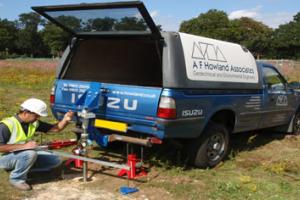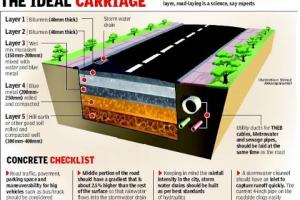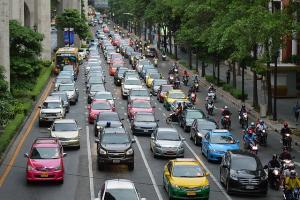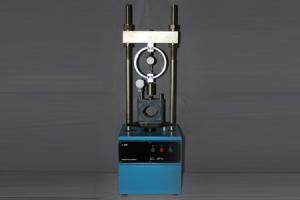Travel Demand Forecasting (Analysis)

Travel Demand Forecasting involves the following factors:
a. Trip generation
Trip generation models strive to predict the number of trips generated by a zone. These models try to mathematically describe the decision-to-travel phase of the sequential demand analysis procedure hence, help in Travel Demand Forecasting. It may be mentioned here that typically the term trip generation is used to mean trip production -- generally the trips made from households, and trip attraction -- the trips made to a particular urban location or activity. However, it is felt that analysis of trip attractions should not be in the purview of trip generation models which attempt to quantify a populations urge or propensity to travel. Rather, trip attractions are an outcome of the destination choice phase of travel behavior. In keeping with this, the present section discusses trip generation primarily in the context of trip productions. Trip attractions are assumed to be an outcome of the destination choice phase and are discussed in the section on trip distribution models.
There are basically two different model structures for trip generation models -- the cross-classification models and the regression models. However, both these model structures incorporate the same basic factors which affect the trip generation of a zone; the models only differ in their characterization of these factors.
The factors (for any given trip purpose) which affect the trip generation of a zone are:
- The number of potential trip makers in the zone; this could be captured by variables like residential density, average household occupancy, age distribution of occupants, etc.
- The propensity of a potential trip maker to make a trip; this is related to automobile ownership, accessibility to public transportation, and the like. For example, persons who own automobiles make more non-work trips than persons who do not own automobiles.
- Accessibility of the zone to potential destinations for a given trip purpose satisfaction; variables like distance to potential destinations can capture this factor. For example, persons who live close to various recreational facilities may make more number of recreational trips than persons who live in areas which do not have nearby recreational facilities.
b. Trip Distribution
Travel Demand Forecasting requires determination of the trip distribution pattern. Trip distribution models strive to predict the number of trips that will be made between a pair of zones for a particular trip purpose. These models try to mathematically describe the destination choice phase of the sequential demand analysis procedure. There are various models of trip distribution. However, most of the models incorporate the same basic factors which affect the number of trips between an origin zone and a destination zone. The models differ in their characterization of these factors and in the way these factors are assumed to affect the trip distribution.
The factors (for any given trip purpose) which affect the number of trips between two zones are:
- The number of trips produced by the origin zone.
- The degree to which the in situ attributes of the destination zone attract trip makers. The attributes which gain importance varies with the trip purpose. For example, if one is modeling the number of shopping trips attracted to a zone then the type of attributes of the zone which assume importance will be total shopping floor area, number of retail outlets, etc. On the other hand, if one is modeling the number of work trips attracted to a zone then the type of attributes of the zone which assume importance will be the number of offices, the type of offices, etc.
- The factors that inhibit travel between a pair of zones. These factors could be, travel time, travel distance, travel cost, etc.
Four different models are presented here. These are:
- Gravity model
- Intervening opportunities model
- Choice model, and
- Entropy Model.
c. Mode choice
On this section we study the different modes available for a certain trip and what factors affect the choice of a mode selection for a particular trip.
d. Route Choice/Traffic Assignment
The process of allocating given set of trip interchanges to the specified transportation system is usually referred to as traffic assignment. The fundamental aim of the traffic assignment process is to reproduce on the transportation system, the pattern of vehicular movements which would be observed when the travel demand represented by the trip matrix, or matrices, to be assigned is satisfied. The major aims of traffic assignment procedures are:
- To estimate the volume of traffic on the links of the network and obtain aggregate network measures.
- To estimate inter zonal travel cost.
- To analyze the travel pattern of each origin to destination (O-D) pair.
- To identify congested links and to collect traffic data useful for the design of future junctions.
Traffic assignment is the last stage of traffic demand modeling. There are different types of traffic assignment models. All-or-nothing, User-equilibrium, and System-optimum assignment models are the commonly used models. All-or-nothing model is an unrealistic model since only one path between every O-D pair is utilized and they can give satisfactory results only when the network is least congested. User-equilibrium assignment is based on Wardrop's first principle and its conditions are based on certain assumptions. Wardrop's second principle is utilized by System-optimum method and it tries to minimize the congestion by giving prior information to drivers regarding the respective routes to be chosen.












